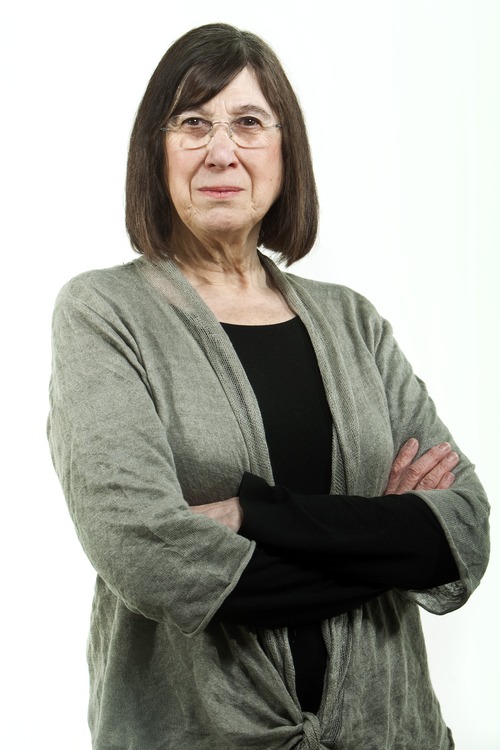This is an archived article that was published on sltrib.com in 2014, and information in the article may be outdated. It is provided only for personal research purposes and may not be reprinted.
At 2 o'clock in the morning on Oct. 10, 1911, a tornado struck the city of Vernal. Strong winds sheared the tops of buggy sheds, carried off horse blankets, and shattered windows. According to the Vernal Express, the bluster "played pranks on the premises of Isaac Steres in the east part of town" where "everything moveable was shifted about promiscuously."
For all the wind's ferocity, no one was harmed. The broken was mended, a blanket was found wrapped around telephone pole wires, and the family had reason to celebrate. Several weeks earlier in 4th District Court, Jewish immigrant Isaac Steres became an American citizen.
Narrowly missing conscription in the Russian army, Isaac left Ukraine for Canada and immigrated to Utah in 1905. His wife, Rose, and their three children remained in Odessa until he saved enough money to send for them.
"Mother always talked about surviving the Cossack pogroms," their American-born daughter, Claire Steres Bernstein, said in a 1972 American West Center interview.
"One time, the Cossacks made a [deadly] sweep of the Jewish section," Claire said. "A Gentile man suddenly grabbed my mother and the children. He hid them in his lumberyard and saved them from that pogrom."
Rose struggled for months to feed and keep her children safe. When she was finally able to book passage, the young family sailed from Germany to New York. They went by train to Ogden. Reunited with Isaac, they headed to their new home in Vernal.
"It was a long journey for Mother," Claire said. "She always kept an Orthodox home and had never eaten non-kosher food. In Utah, she ate no meat at all until my father learned how to ritually kill a chicken [following Jewish dietary law]."
Living in a small, log cabin, Rose was puzzled by the cook stove. "She had never seen nor worked one before," Claire said. "Fortunately, a kind neighbor taught her how to open and close a damper to regulate the temperature. From then on, Mother would get up in the middle of night, set the dough, and bake bread two or three times a day."
With financial backing from Salt Lake City Jewish merchants, Isaac traveled to the Uintah and Ouray reservation to buy furs and hides. He placed ads in the Vernal Express, and sold household items.
"He barely eked out a living," Claire said. "To help support our growing family, Mother raised vegetables and baked this gorgeous bread; the best we ever ate."
Claire was born in Vernal in 1907. An early reader, she attended the Congregationalist school.
"It was a wonderful, warm community," she said. "I went to Sunday school for several years. But when I was told Jews killed Christ, I came home crying and my father wouldn't let me go any more."
Rose suffered from high blood pressure. Around 1914, the Stereses relocated to Salt Lake City's lower elevation. Eventually, they built a large brick home with an attached grocery store on the corner of 300 East and 900 South.
"Mother worked there for years while my father traveled, sometimes for days, buying hides and furs," Claire said.
Finding unity at Congregation Montefiore, at 355 S. 300 East, the six Steres children went to Hebrew school. As teenagers, they developed ties with Ogden's Jewish community. It was there in the foothills Claire experienced an "incident that affected me because of what it represented."
Hiking on a trail with friends, they spotted the Ku Klux Klan burning a cross on the hillside. Stunned into youthful curiosity, they hid.
"They were protesting against Catholics and Blacks," she said. "They were naming Jews, too. And there we were, just kids, unseen, and hearing terrifying things. It wasn't until later I understood how dangerous it could have been had they taken notice."
Historian Eileen Hallet Stone is the author of "Hidden History of Utah," a compilation of her Salt Lake Tribune columns. She may be reached at ehswriter@aol.com. Note: Special thanks to Gail Bernstein Ciacci.



